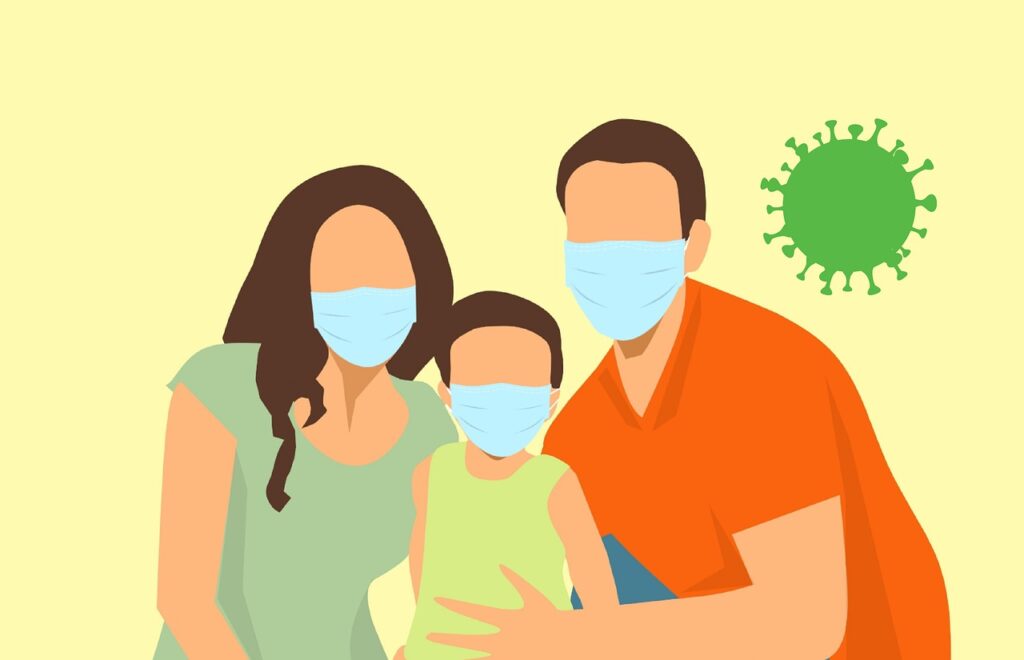



This image is the property of feeds.abplive.com.
Imagine a scenario where a new and deadly disease is spreading around the globe, claiming millions of lives and causing widespread panic. This is not a movie plot, but a potential reality known as Disease X. Coined by the World Health Organization (WHO), Disease X represents the next global epidemic, an unknown pathogen waiting to strike.
With the potential to surpass the lethality of COVID-19 and Zika, Disease X is a formidable threat that demands our attention. To protect ourselves, we must develop guidelines, enforce travel restrictions, and prioritize surveillance and research.
Are we ready to face this formidable enemy? Let’s explore the alarming reality of Disease X and what can be done to prevent its devastating consequences.
Definition of Disease X
Disease X is a term coined by the World Health Organization (WHO) as an identifier for the disease that is predicted to be responsible for the next major global epidemic.
It represents an unknown pathogen that has the potential to cause severe illness and high mortality rates. The specific characteristics of Disease X, including its mode of transmission and lethality, are not yet identified, making it a significant concern for global health authorities.
Characteristics of Disease X
Unknown Pathogen
One of the defining features of Disease X is that its causative pathogen remains unidentified. This poses a great challenge for public health officials and researchers as they struggle to develop targeted treatment strategies and preventive measures.
Without a known pathogen, it becomes difficult to accurately predict how the disease will progress or assess its potential impact on the population.
High Lethality
Disease X is expected to exhibit a high lethality rate, similar to other deadly diseases such as Ebola. The severity of the disease is likely to surpass that of previous epidemics, making it a significant threat to global health.
The high lethality associated with Disease X increases the urgency for robust preparedness and response efforts to mitigate its potential impact.
Efficient Transmission
Efficient transmission is another characteristic attributed to Disease X. It is anticipated to spread rapidly within communities, potentially surpassing the transmissibility of the SARS-CoV-2 virus, responsible for the COVID-19 pandemic.
The ability of Disease X to efficiently transmit from person to person increases the risk of widespread infection and poses a challenge to containment efforts.
Potential Death Toll
The potential death toll of Disease X raises concerns among health authorities worldwide. It is estimated that Disease X could claim the lives of over 50 million people, presenting a catastrophic loss of life. This alarming statistic underscores the vital importance of proactive preparedness measures to prevent such devastating consequences.
Possibility of Disease X Origin
Zoonotic Nature
Based on previous epidemic patterns and emerging infectious diseases, it is highly likely that Disease X will have a zoonotic origin. Zoonotic diseases are caused by pathogens that can be transmitted between animals and humans.
The close contact between humans and wildlife, especially in areas of habitat destruction and increased human encroachment, creates opportunities for spillover events in which the pathogen jumps from animals to humans. Understanding the zoonotic nature of Disease X is crucial for developing effective preventive measures and surveillance strategies.
RNA Virus as the Cause
RNA viruses, known for their high mutation rates and potential for rapid adaptation, are often the culprits behind outbreaks and pandemics. Disease X is expected to be caused by an RNA virus, similar to several other notable infectious diseases.
The genetic diversity and evolutionary potential of RNA viruses contribute to their ability to overcome host defenses and pose significant challenges to control efforts. Identifying the specific RNA virus responsible for Disease X is essential for developing targeted antiviral therapies and vaccines.
Comparison to Previous Epidemics
More Lethal than COVID-19
Disease X is projected to be more lethal than COVID-19, the ongoing global pandemic caused by the novel coronavirus, SARS-CoV-2.
While COVID-19 has already claimed a substantial number of lives and significantly impacted healthcare systems worldwide, the potential mortality rates associated with Disease X are expected to surpass those observed during the current pandemic. This highlights the urgency and importance of preparedness efforts to mitigate the potential devastation that Disease X could bring.
More Lethal than Zika


This image is the property of pixabay.com.
Zika, a mosquito-borne viral infection, caused alarm due to its association with severe birth defects and neurological complications. While Zika had a profound impact in specific regions, Disease X is anticipated to be even more lethal in comparison.
The gravity of Disease X’s expected lethality surpasses that of Zika, further emphasizing the need for comprehensive preparedness strategies.
Importance of Preparation against Disease X
Need for Guidelines
Preparation and readiness play a crucial role in mitigating the impact of Disease X. The development of comprehensive guidelines and protocols for healthcare professionals, public health agencies, and individuals is essential to ensure an effective and coordinated response.
These guidelines should encompass strategies for identifying and diagnosing the disease, implementing appropriate infection control measures, and managing severe cases. Adequate preparation through guidelines will enable a swift and unified response in the face of Disease X.
Implementation of Travel Restrictions
Given the potential of Disease X to rapidly spread across populations, the implementation of travel restrictions becomes a vital component of preparedness efforts. Restricting travel to and from affected areas can delay the introduction of the disease into new populations and allow additional time for preparedness measures.
Nonetheless, these restrictions must be balanced with global cooperation, as collaboration between countries facilitates information sharing, resource allocation, and research efforts to combat Disease X effectively.
Surveillance and Research
Comprehensive surveillance systems aimed at detecting Disease X early on are critical to its containment. Timely identification of cases, monitoring of transmission patterns, and analysis of genetic sequencing are essential for understanding the disease’s behavior and developing targeted interventions.
Concurrently, robust research efforts must be initiated to accelerate the identification of the causative pathogen, further elucidate its characteristics, and explore treatment and vaccine development. By investing in surveillance and research, the global community can better prepare and respond to Disease X.
Definition of Disease X


This image is property of pixabay.com.
Disease X is characterized by an unidentified pathogen with high lethality, efficient transmission, and the potential to cause a substantial death toll.
Its zoonotic nature and RNA viral cause make it distinct from previous epidemics, such as COVID-19 and Zika. Preparing for Disease X necessitates the development of guidelines, the implementation of travel restrictions, and the strengthening of surveillance and research efforts.
Risk Assessment of Disease X
Assessing the risks associated with Disease X is crucial for understanding its potential impact on global health and guiding preparedness strategies.
Through risk assessment, the likelihood of Disease X emerging in different regions and the severity of its consequences can be evaluated. Identifying susceptible populations and vulnerable healthcare systems can aid in resource allocation and targeted interventions.
Risk assessment provides a foundation for informed decision-making and prioritization of efforts in Disease X preparedness.
Global Efforts in Disease X Preparedness


This image is the property of pixabay.com.
The international community recognizes the grave threat posed by Disease X and has taken proactive measures to enhance preparedness. Collaborative efforts involving governments, international organizations, and research institutions have been at the forefront of Disease X preparedness.
Global initiatives have focused on strengthening surveillance systems, sharing knowledge and resources, facilitating research collaborations, and harmonizing response efforts. The coordinated response from various stakeholders enhances our collective ability to tackle Disease X effectively.
Lessons Learned from Previous Epidemics
Previous epidemics, such as Ebola, SARS, and COVID-19, have highlighted the importance of preparedness and response in the face of emerging diseases. These outbreaks have exposed vulnerabilities in healthcare systems, highlighted the need for effective communication and coordination, and underscored the significance of research and development of medical countermeasures.
Drawing upon the lessons learned from these experiences can inform our approach to Disease X preparedness, ensuring a more effective and proactive response.
Potential Impact on Healthcare Systems
The potential impact of Disease X on healthcare systems cannot be understated. The high lethality and efficient transmission associated with this unidentified disease pose a significant burden on healthcare infrastructure and resources.
Overwhelmed healthcare systems can lead to a breakdown in care delivery, hinder access to critical medical services, and exacerbate the consequences of Disease X. Strengthening healthcare infrastructure, ensuring an adequate supply of essential medical equipment and personnel, and implementing robust surge capacity plans are crucial steps in mitigating the potential impact on healthcare systems.
In conclusion, Disease X represents a formidable threat to global health. Its unknown pathogen, high lethality, efficient transmission, and potential death toll necessitate proactive preparedness efforts. By understanding its zoonotic nature and the likely involvement of an RNA virus, the world can take decisive steps in developing guidelines, implementing travel restrictions, and strengthening surveillance and research.
Learning from past epidemics and evaluating the potential impact on healthcare systems will contribute to a comprehensive response to Disease X. Together, we can strive for effective preparedness and mitigate the devastating consequences of this future epidemic.







